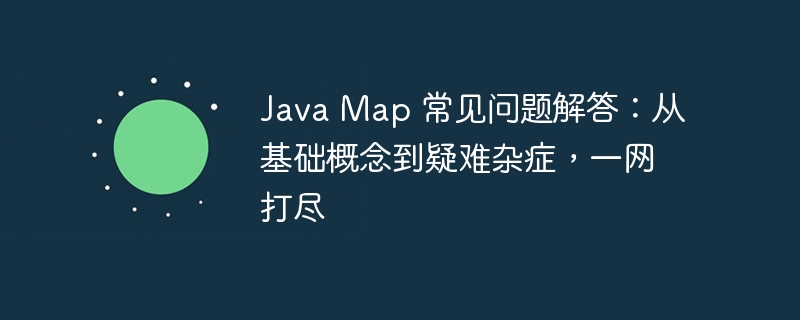

php editor Apple brings you answers to Java Map FAQs. Whether you are confused about basic concepts or have encountered difficult problems, this article will answer them one by one to help you better understand and apply Java Map. Let's discuss it in depth and solve the various problems you encounter when using Java Map!
1. What is Map?
Map is an interface provided by Java for storing key-value pair data. A key-value pair consists of a key and a value. A key is used to uniquely identify a value. Values can be any type of data.
2. Common implementation classes of Map
Common implementation classes ofMap include HashMap, TreeMap and LinkedHashMap.
2. Use of Map
1. Add key-value pair
To add key-value pairs to the Map, you can use the put() method. The put() method returns the old value, or null if there is no old value.
Map<String, Integer> map = new HashMap<>();
map.put("苹果", 10);
map.put("香蕉", 20);
map.put("梨", 30);2. Get value
To get the value in the Map, you can use the get() method. The get() method returns the value corresponding to the specified key, or null if the key is not found.
Integer appleCount = map.get("苹果");
Integer bananaCount = map.get("香蕉");
Integer pearCount = map.get("梨");3. Delete key-value pairs
To delete key-value pairs in Map, you can use the remove() method. The remove() method returns the removed value, or null if the key is not found.
Integer removedCount = map.remove("苹果");4. Traverse Map
To traverse the key-value pairs in the Map, you can use the forEach() method. The forEach() method will accept a Consumer parameter, which will perform the specified action for each key-value pair.
map.forEach((key, value) -> System.out.println(key + "=" + value));
3. Frequently Asked Questions
1. How to choose the appropriate Map implementation class?
HashMap, TreeMap and LinkedHashMap are all common implementation classes of Map, each with its own advantages and disadvantages.
2. Can the key of Map be null?
Map keys can be null, but values cannot be null. If the key is null, the value corresponding to the key will be stored in the Map.
3. Can the value of Map be null?
The value of Map can be null. If the value is null, the value corresponding to the key will be stored in the Map.
4. Can the keys and values of Map be of different types?
Map keys and values can be of different types. The key's type must implement the Comparable interface in order to be compared.
The above is the detailed content of Java Map FAQ: From basic concepts to tricky problems, all in one place. For more information, please follow other related articles on the PHP Chinese website!




